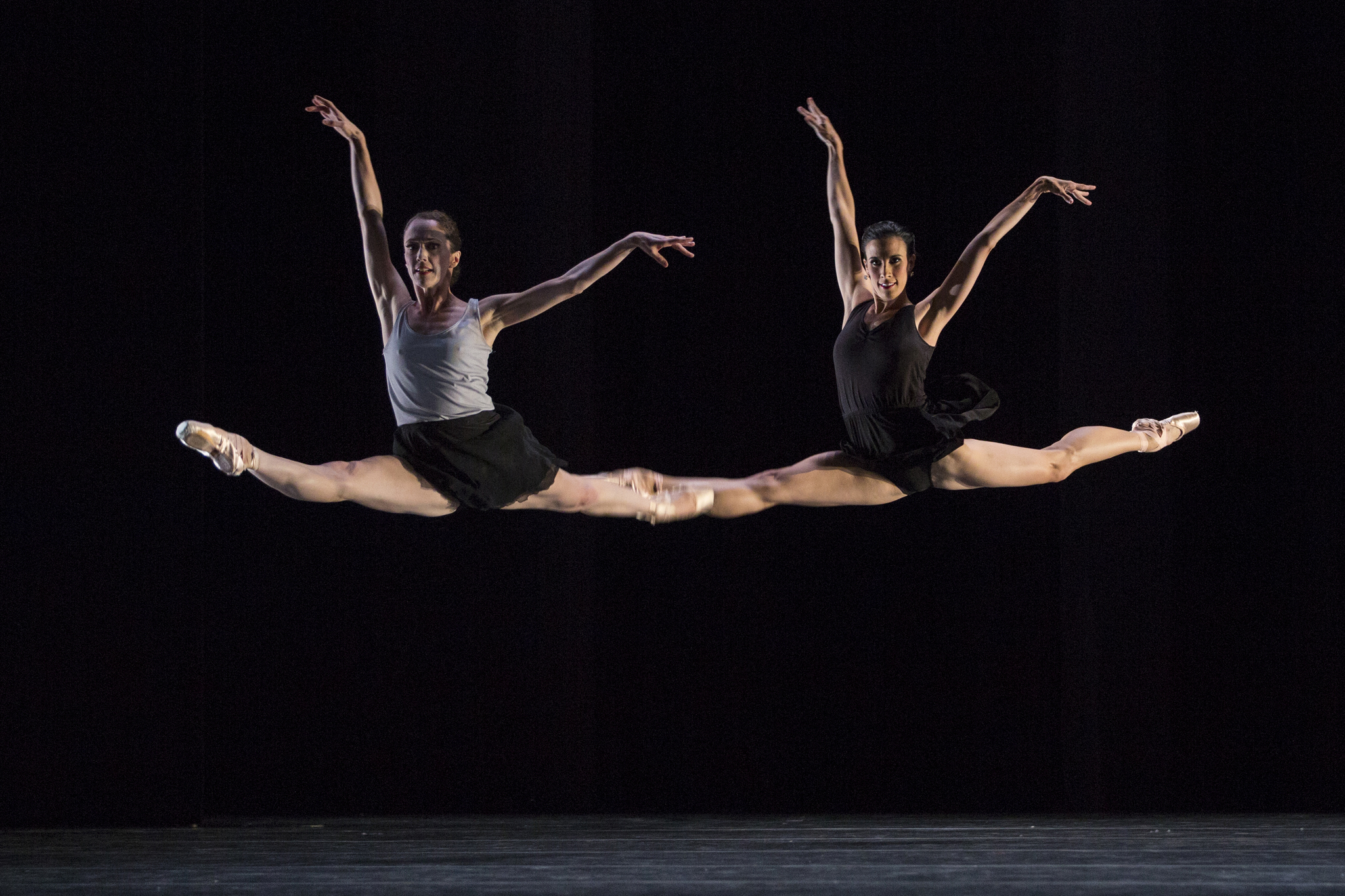Pacific Northwest Ballet is waving a flag for their season opener, but it’s not the Stars and Stripes. From a program essay discussing Louis XIV to a work fresh from the Paris Opera Ballet stage, the company is celebrating the French roots of its art form.
PNB artistic director Peter Boal commissioned Three Movements from choreographer Benjamin Millepied in 2008 when he was still a performer with the New York City Ballet. The commission came long before celebrity made Millepied known in the wider world—celebrity that came thanks to his choreography for Darren Aronofsky’s film Black Swan, his marriage to Natalie Portman, and his surprise choice for the directorship of the Paris Opera Ballet. An early work, Three Movements, still echoes the potential of that time. Millepied translates the driving tension of the Steve Reich score into a series of urban encounters—men and women looking for connection, where a casual touch might lead to a serious relationship or an easy dismissal. Laura Tisserand and Miles Pertl stand out from the ensemble cast as we watch their push/pull partnership evolve—but any of the people onstage might be equally fascinating if our focus had moved in their direction.
Millepied made Appassionata for the Paris Opera Ballet, and it premiered there last February, after he announced he would be leaving the company to return to the U.S. Like Three Movements, this work focuses on personal relationships, but with only six dancers, we see far more detail from each individual. The choreography matches the emotional abandon of the score, Beethoven’s piano sonata of the same name. The ballet, divided into two sections, opens with a public feeling—the cast wears a variation of street clothes, and their dancing is full of balletic detail. The second movement sheds some of that formality. While their relationships are still the main focus, we could be watching them in a dream world, or even after death—dressed in gauzy, loose-fitting tunics, and the women in soft shoes with their hair down, they have most certainly left something behind. The score was performed by Allan Dameron; the reciprocal energy between him and the rest of the cast was stellar.
The program ends with George Balanchine’s Symphony in C, which earns its French credentials from its score by Georges Bizet and its original production, which was for the Paris Opera Ballet in 1947. Balanchine didn’t hesitate to stage it for his own New York City Ballet company in 1948, though, and it has become an iconic example of his neoclassical style. Each of its four sections is led by a main couple—when all four pairs come together at the end of the ballet for a sparkling finale, they amplify the thrill of that virtuosity, the descendants of kings and queens. McCaw Hall, 321 Mercer St., 441-2424, pnb.org. $30–$187. 7:30 p.m. Thurs., Sept. 29– Sat., Oct. 1; 1 p.m. Sun., Oct. 2.








